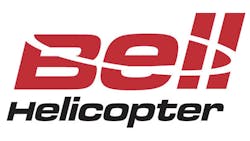President and CEO John Garrison believes that a company's safety performance is a key indicator of the company's overall business performance. He believes that safety should be managed equally with quality, delivery, inventory and finance.
Members of Garrison's Executive Leadership Team and Senior Leadership Teams participate in an event called Safety Appreciation Day. They greet employees at the door as they report to work. Each employee receives a handshake, a small token of appreciation and a "thank you for being safe” message. At the most recent event in April, employees received a lanyard promoting the "Mission Zero” initiative and an information card that offers suggestions to help the company achieve zero injuries. These suggestions include:
- Be aware of your surroundings.
- Slow down.
- Never walk and text.
- Use the handrail while on the stairs.
- Listen to your instincts. If it doesn't feel right, it probably isn't.
- Always wear personal protective equipment (PPE) in areas that require it.
- Do not allow clutter to build up in your area.
- Inspect tools before use.
- Ensure you lift properly. If a load is too heavy, ask for help.
- Report safety concerns to an EHS professional or via the near-miss reporting site on the Bell intranet homepage.
- Know your evacuation routes in case of an emergency.
Safety is an organizational responsibility at Bell, says Jason Kravik, CSP, director of environment and industrial safety, belonging to every person who works at the company, from Garrison to the newest hire.
"The following quote from one of John Garrison's letters to all employees perhaps says it best: '… zero injuries is possible. It is possible when we all work together as one Bell, on a mission to protect ourselves and each other. Our families expect nothing less. When we have zero injuries, we will have zero regrets,'” says Kravik.
Garrison puts his money where his mouth is: The company continues to make technological and engineering improvements that reduce the risk of injuries, illnesses or environmental incidents. Since 2010, more than 600 line supervisors, managers, directors and VPs have attended a 2-day safety leadership training course. In addition, more than 3,500 employees have attended a half-day training session on personal accountability for safety.
The company also promotes a program called "Safety Advocates.” Participants are given training on an ongoing basis and are the eyes and ears of safety on the shop floor, says Kravik.
"They work in their routine jobs but have the ability to step out of their production role as needed to support EHS … They lead by example and act as a force multiplier for our EHS professionals by helping supervisors and hourly workers with basic EHS matters and related activities, such as coaching new employees, leading tool box safety talks, conducting audits and helping with incident investigations,” he says.
| Bell Helicopter, Hurst, TX | |
| Industry: Aerospace Manufacturing | |
| 11,000 employees, 30 locations in eight countries | |
| 30 EHS Professionals | |
About the Author

Sandy Smith
Sandy Smith is the former content director of EHS Today, and is currently the EHSQ content & community lead at Intelex Technologies Inc. She has written about occupational safety and health and environmental issues since 1990.

